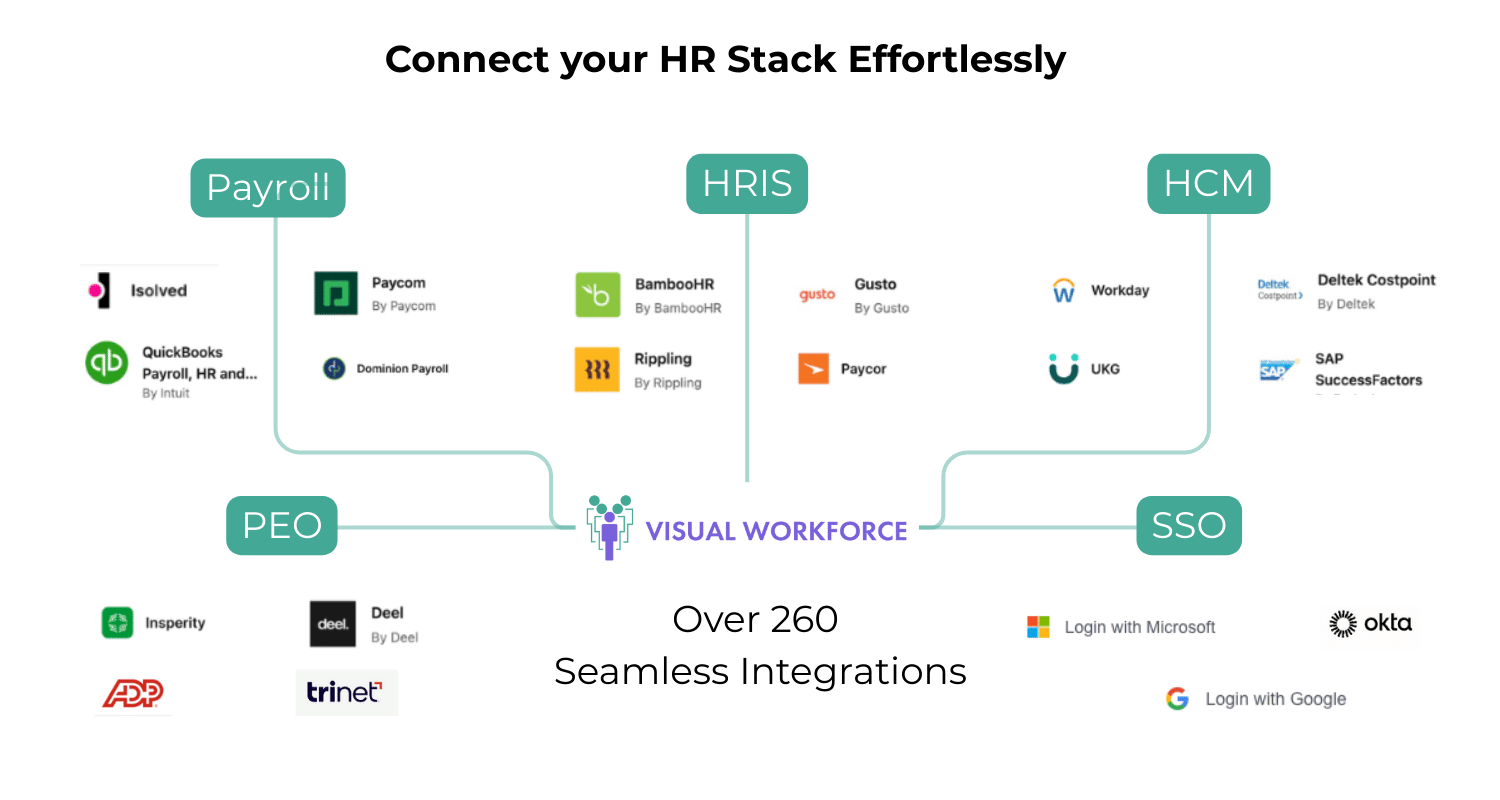Crossing The Talent Management Chasm With Skills Data
The Growing Talent Management Challenge in 2024
In today's rapidly evolving business landscape, organizations face a widening chasm between their workforce's current skills and the capabilities required for future success. Traditional talent management approaches are no longer sufficient to address this gap. To thrive in 2024 and beyond, companies must embrace innovative strategies centered around skills based organization, visual workforce management, internal mobility, and talent intelligence.
According to a 2023 McKinsey Global Survey, 87% of executives say they are experiencing skill gaps in the workforce or expect them within a few years. Yet, less than half of respondents have a clear sense of how to address the problem.
Harnessing the Power of Skills Data in Modern Talent Management
The foundation of an effective talent management strategy lies in comprehensive skills data. By leveraging advanced digital tools and analytics, organizations can:
Create a detailed skills inventory of their current workforce
Identify critical skills gaps and future skill requirements
Develop data-driven roadmaps for workforce development
Measure progress and success objectively
Modern talent intelligence platforms offer real-time insights into your workforce's capabilities, enabling leaders to make informed decisions about talent acquisition, development, and deployment.
A 2023 Deloitte study found that organizations with mature talent analytics are 3.1 times more likely to outperform their peers in quality of hire, retention, and leadership capabilities.
Stacey Harris, Chief Research Officer and Managing Partner at Sapient Insights Group, notes:
"Organizations that invest in robust skills data and analytics are better positioned to make informed decisions about talent acquisition, development, and deployment. This data-driven approach is becoming a critical differentiator in the war for talent."
Embracing a Skills Based Organization Model
A 2023 Gartner report reveals that organizations that use a skills based approach improve workforce responsiveness by 24% and employee performance by 16%. Transitioning to a skills based organization involves restructuring your talent management approach around skills rather than traditional job roles. This shift allows for greater flexibility and agility in matching talent to business needs. Key components include:
Skills Framework: Develop a comprehensive skills taxonomy that aligns with your organization's strategic goals and industry standards.
Skills Matrix: Create a visual representation of your workforce's skills, highlighting strengths, gaps, and development opportunities across the organization.
Job Architecture: Redesign job roles and career paths based on skills clusters, enabling more fluid movement of talent within the organization.
David Green, Managing Director of The Insight222 People Analytics Program, observes:
"The shift to skills based organizations is not just a trend; it's a fundamental reimagining of how we approach work. It allows for unprecedented agility in matching talent to business needs."
Visualizing Your Workforce for Strategic Insights
Implement a visual workforce planning tool that provides intuitive, real-time representations of your organization's skills landscape. A 2023 PwC survey found that 72% of CHROs believe visual workforce planning tools are critical for making informed decisions about talent allocation and development. These tools enable leaders to:
Quickly identify skill hotspots and gaps across teams and departments
Forecast future skill needs based on business projections
Make data-driven decisions about talent allocation and development initiatives
Fostering Internal Mobility to Bridge the Skills Gap
Internal mobility is a crucial strategy for bridging the skills gap and retaining top talent. LinkedIn's 2023 Workplace Learning Report shows that companies excelling at internal mobility retain employees for an average of 5.4 years, nearly twice as long as companies that struggle with it. To promote internal mobility:
Create a transparent internal job marketplace that showcases opportunities based on skills, not just job titles.
Implement AI-powered matching algorithms to connect employees with relevant internal opportunities.
Encourage managers to support employee growth, even if it means moving to different teams or departments.
Recognize and reward managers who actively develop and share talent across the organization.
Cultivating a Growth Mindset for Continuous Learning
A 2023 IBM study found that organizations that score highly on measures of learning culture and growth mindset are 68% more likely to be high-performing than their peers. To successfully navigate the talent management chasm, organizations must foster a culture of continuous learning and adaptability:
Use skills data to create personalized learning pathways for employees.
Implement micro-learning and just-in-time training initiatives to support rapid skill acquisition.
Encourage cross-functional projects and rotational programs to broaden employees' skill sets.
Recognize and celebrate skill development and internal career progression.
Leveraging Talent Intelligence for Strategic Decision-Making
Mercer's 2023 Global Talent Trends study reports that 74% of high-performing companies use talent intelligence platforms to inform broader business strategies. Advanced talent intelligence platforms provide valuable insights that can inform broader business strategies:
Align workforce planning with business objectives by identifying future skill requirements.
Optimize resource allocation by matching skills to projects more effectively.
Inform M&A decisions by assessing the skills composition of potential acquisition targets.
Guide location strategy by analyzing skills availability in different geographic areas.
Conclusion: Building a Future-Ready Workforce in 2024 and Beyond
By embracing these advanced skills based strategies, organizations can effectively bridge the talent management gap and build a workforce that's agile, engaged, and prepared for future challenges. The key lies in leveraging comprehensive skills data, fostering a culture of continuous learning, and aligning talent management practices with overall business strategy. A 2023 World Economic Forum report predicts that by 2025, 50% of all employees will need reskilling due to the adoption of technology, highlighting the ongoing nature of this challenge.
As Satya Nadella, CEO of Microsoft, aptly puts it:
"The key to bridging the talent management gap isn't just about technology or skills—it's about fostering a culture of continuous learning. Organizations that can create this culture will be best positioned to thrive in the rapidly evolving digital economy."
As you implement these approaches, remember that the journey to a skills based organization is ongoing. Regularly reassess your skills framework, update your talent intelligence systems, and remain open to new innovations in the field of talent management. With a commitment to data-driven, skills-centric practices, your organization can not only cross the talent management chasm but thrive in the ever-changing landscape of the future of work in 2024 and beyond.
Ready to enhance your talent management strategy? Start leveraging skills intelligence data today with Visual Workforce.
Learn how Visual Workforce helps you automate the discovery and optimization of the skills of your people, teams, and projects to help you cross the talent management chasm.
Subscribe
Sign up to receive updates and announcements from Visual Workforce.








